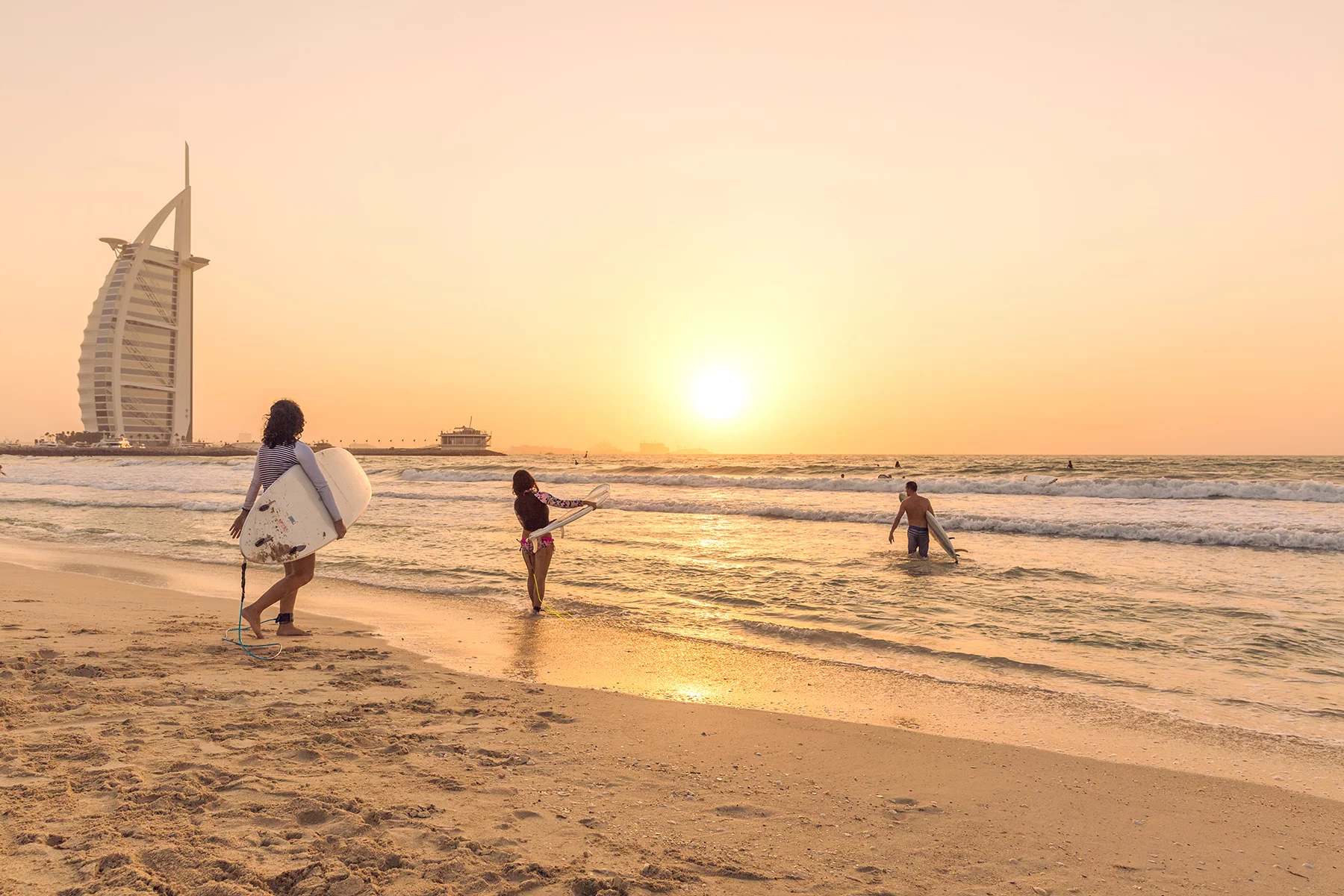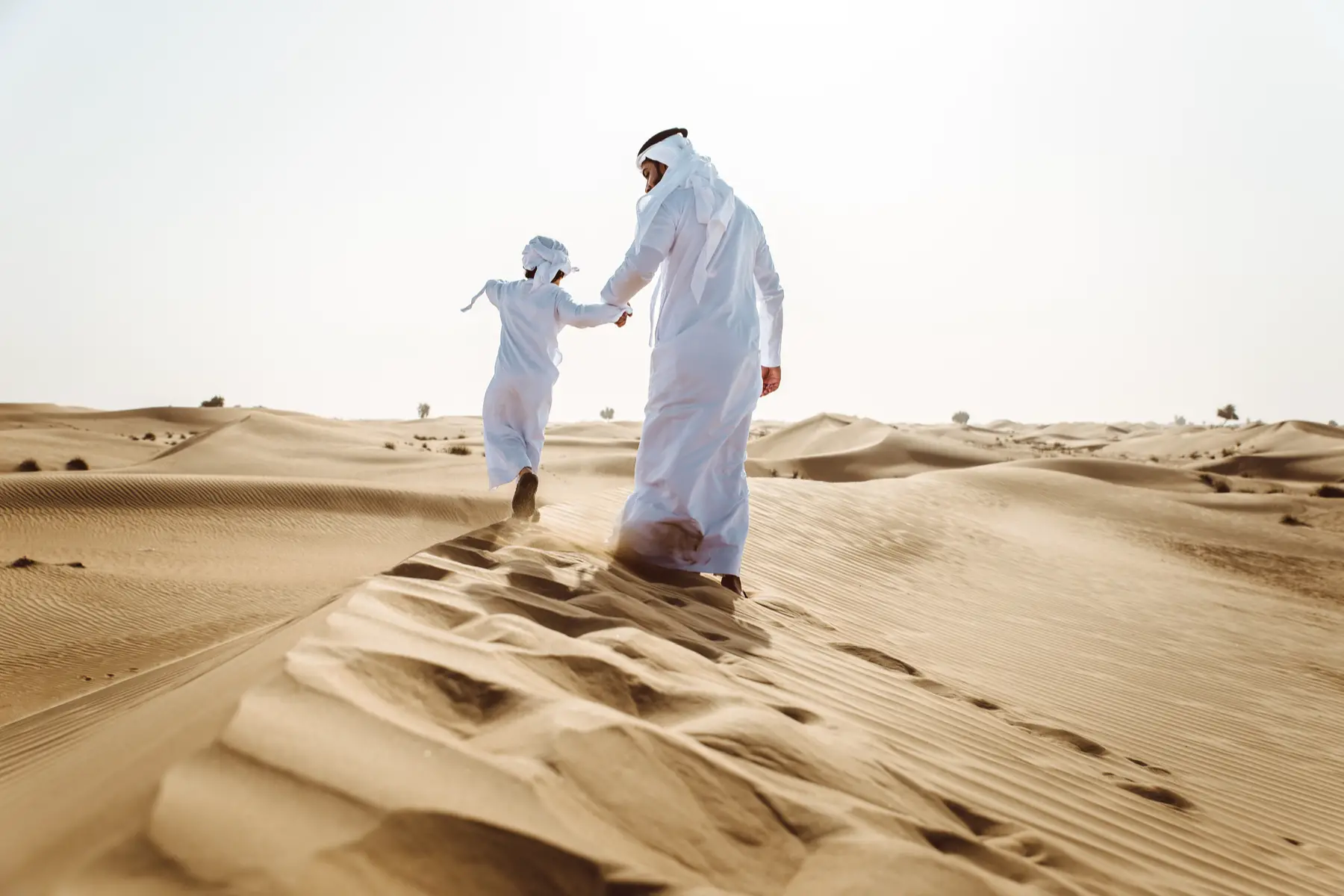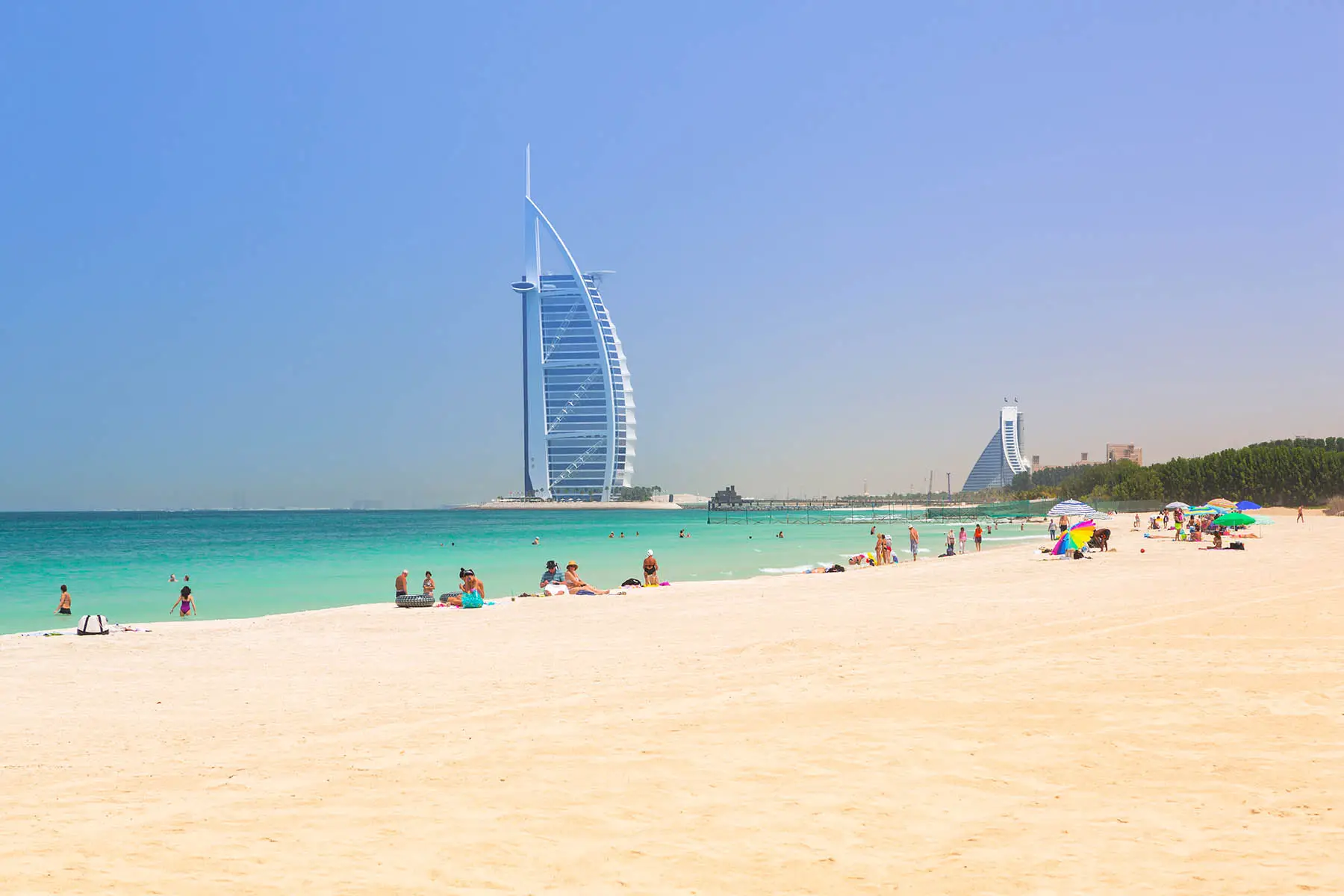So what is the ideal season to host a barbecue or visit your local rooftop bar? And what weather health hazards do you need to be aware of? We explain all in this helpful guide and offer advice on how you can prepare for the unusual environment. The guide includes the following information:
The climate in the UAE
To those who live there, the climate in the UAE consists of only two seasons: hot and hotter. Or summer and hot summer. The reality, of course, is more nuanced. The country is characterized by hot and sunny summers with humidity levels that can make being outdoors unbearable. That said, the pleasant and mild winters bring great relief. However, the transitional seasons of autumn and spring have their own distinct features, not least of which are dust storms and rain.

At the height of summer, temperatures in the UAE hover around the 50-degree mark. This typically prompts residents to spend the entire day – and night – indoors, where air-conditioning helps maintain more convivial levels. Expats from colder countries who are attracted by the year-round sunshine and relocate to the UAE often find this inversion the hardest adaptation of all. As a result, they often seek holidays to snowy or rainy destinations.
Climate change has wrought several changes in recent years, as have weather management techniques such as cloud seeding. Nevertheless, dust storms remain a fairly regular occurrence, while the odd snowstorm keeps things interesting.
Flanked by the Persian Gulf and the Gulf of Oman, the north of the country is ridged by the Hajar Mountains, while the Rub’ Al Khali desert sits to the southwest. This geographical diversity means that temperatures across the UAE’s seven constituent emirates can vary by about five degrees. Most urban areas are sited along the coast and see humidity levels reach up to 85%, particularly in the summer. Inland areas, meanwhile, are significantly drier. The summer heat is easier to endure in the northern mountain areas, which also see more rain in the winter months.
Dust storms
The climate in the UAE is also characterized by frequent sandstorms. These typically occur over the summer and during periods of seasonal change, particularly as winter moves into spring.

At such times, visibility drops to a couple of hundred meters. Many residents also report increased incidents of allergy and asthma attacks. Sandstorms in the UAE usually comprise a mix of silica crystals as well as viruses, bacteria, fungi, dust mites, and even plants; all of which can remain suspended in the air for a few days at a time.
Thankfully, the country doesn’t experience the kind of severe squall seen in Tom Cruise’s Mission Impossible: Ghost Protocol, which was set in Dubai. Other parts of the region, such as Saudi Arabia, Kuwait, and Iraq, experience the worst storms, as they often experience strong north-westerly winds. That said, the 2017 UAE Climate Change Risks & Resilience report forecasts that global warming will likely trigger more sandstorms in the future.
UAE climate averages
The UAE is located on the boundary between the earth’s tropical and subtropical zones, with a climate to match. Average temperatures in the country’s capital city, Abu Dhabi, range from 18 degrees Celsius in January to 35 in August. Further south in Dubai, the mercury rises to a degree higher on average throughout the year. Snow, then, is not a concern. As a matter of fact, snowfall in the UAE has only occurred three times since records began: in 2004, 2009, and 2017.
For the most part, residents don’t need to bother with an umbrella in the UAE. The average annual rainfall in the coastal areas is less than 120mm per year; although that can treble in some mountainous regions. Like in most tropical regions, rain falls in short, torrential bursts. Therefore, flash floods in the ordinarily dry riverbeds and along the streets are not uncommon – thanks to sand-clogged drainage systems.
Wind, on the other hand, can be a bother, depending on the direction it arises from. The sharqi – a humid, south-eastern gale – can overwhelm the coastal areas in the summer. Similarly, the shamal – a cool north-westerly wind which predominates during the winter months – can be accompanied by sand.
Overall, though, the dependably sunny climate in the UAE has turned it into a popular tourist destination. Visitors and residents alike can count on sunshine every day, except February to April; when there are 27 days of sun on average.
Seasons in the UAE
Winter
Officially, winter in the UAE begins in December and runs until mid-March, and not from October to March; as many residents erroneously believe. Minimum temperatures hover around 12 degrees Celsius during these three months, with highs of about 25 degrees. The sea remains warm enough to swim in, dropping to 23 degrees Celsius at its lowest; the eastern Gulf of Oman is usually a little warmer than the Persian Gulf.
February sees the most rain, with Abu Dhabi clocking around 42mm. Outdoor activities tend to be concentrated over the winter when temperatures are more bearable. Long drives and camping expeditions into the desert are common, and many residents will host regular barbecues; sometimes even in public parks. New Year’s Eve celebrations in Dubai have become a big holiday draw in recent years. Shopping festivals, music concerts, and outdoor cinema events, on the other hand, are all common throughout the entire season.
Spring
Spring in the UAE is warm by European standards. Temperatures rise from 28 degrees Celsius, on average, in March to anywhere between 35 and 39 degrees Celsius in May. March is sometimes accompanied by intermittent rain, but there is little precipitation as the season continues. As one of the busiest seasons in the year, spring in the UAE is filled with events, from trade shows to entertainment and cultural happenings.
Autumn
The season with the biggest variations in the UAE, autumn comes in hot and humid in September and leaves placidly in December. Average midday temperatures range from 40 degrees Celsius at the start of the season to 26 towards the end of the year. Dust storms typically occur in October, and some precipitation – between 4mm to 9mm – falls over the season.
Autumn in the UAE is the start of the outdoor season, and residents typically use the period to take advantage of the country’s stunning beaches. The most important holidays over this period are at the start of December when the UAE celebrates National Day (on 2 December) and the country enjoys a long weekend.
Summer
In contrast to the beach weather that characterizes summer in other parts of the northern hemisphere, the months from June to mid-September are best spent indoors in the UAE. As the hottest season of the year, midday temperatures average around 42 degrees Celsius. In recent years, however, global warming has led to highs of 51 degrees, typically accompanied by haze and humidity levels above 80%.
Heat strokes and hyperthermia are common, and residents are typically advised to only venture outside early in the morning or late in the evening. Hats and sun umbrellas are also recommended. Malls and indoor theme parks often host cultural events and concerts throughout the hot season, but water parks and ice rinks are also popular.
Seasonal garments in the UAE
Emiratis typically wear long-flowing garments that are traditional to the Arabian desert. Men favor ankle-length garments with long sleeves, called kanduras. Traditionally white, they are usually made of lightweight materials such as cotton, but darker colors with woolen weaves are often seen during the winter.

Local women in the UAE, on the other hand, usually wear the abaya – a loose over-garment or cloak – and a shayla or scarf wrapped around their heads. Although conventionally black, abayas now come in a wide range of colors and are often embellished with everything from embroidery and sequins to feathers and fur.
In general, lightweight clothes are worn throughout the year, but heavily air-conditioned offices prompt some cubicle workers to hunker down under shawls and blankets. Much to the amusement of some, cardigans and boots are not uncommon in the winter – especially indoors. Businessmen are likely to break out linen suits during the warmer months, but the country’s Islamic values frown upon anything too skimpy. Women are always expected to have their shoulders covered, with skirts or pants reaching to the knee. Similarly, men are best off wearing at least knee-length shorts.
Holiday seasons in the UAE
In the UAE, seasonal holidays occur in line with the school year. The country’s wide mix of nationalities (and different academic calendars) means that these can vary by curriculum and school. Nevertheless, all schools tend to close over the summer, in June, and reopen at the end of August.
Because of its high percentage of expats and the searing temperatures, residents usually return to their home countries for much of the hot season. Airports tend to be particularly busy at the start and end of the season, with Dubai International routinely posting passenger traffic warnings during this time.
Useful resources
Here are some links to useful websites and web pages for expats in the UAE:






